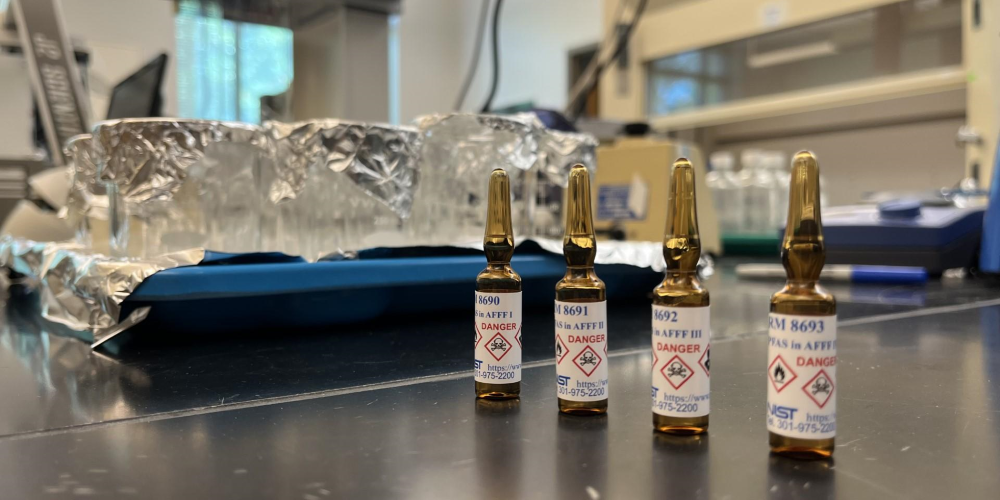In movies, when we see fiery car crashes or flaming planes on runways, we know they are not real. But in the real world, fuel fires must be quenched with special kinds of chemicals, and the ones that have been most commonly used are known as aqueous film-forming foams (AFFFs). However, environmental and health concerns about AFFFs have launched widespread efforts to detect, monitor, and eventually eliminate them. Now, researchers at the National Institute of Standards and Technology (NIST) have released new reference materials to expedite these efforts.
What makes the foams so effective are chemical compounds called per- and polyfluoroalkyl substances (PFAS), enabling them to suppress fuel fires much more quickly and efficiently compared with other alternatives. Unlike water dumped on a flame, which wouldn’t work in a scenario where a flammable liquid is causing the fire, the foams not only spread over the fire but prevent it from reigniting by suppressing oxygen flow and fuel vapors. AFFFs were first introduced in the 1940s and have been used since that time not only in emergencies but also in firefighter training exercises.
Due to their significant ability to resist heat and chemical changes, the PFAS in these foams break down slowly over time, giving them the name “forever chemicals.” The foams can easily leak into nearby water and soil and affect the surrounding ecology, raising concerns because PFAS have been linked to negative health effects such as certain cancers.
Because of these concerns, organizations including the U.S. Department of Defense (DoD), are starting to eliminate the use of PFAS-containing materials. Under the 2020 National Defense Authorization Act, the DoD will be required to stop purchasing AFFFs from manufacturers by October 2023 and will stop using them by October 2024.


